This essay, written as
liner notes for "Golden Years of Soviet Jazz", Leo
Records' new CD series, is published courtesy of the author, Alex
Kan, BBC air host and new music historian.
Please note that Mr.Kan describes mostly the history of new improvised
music in the USSR and post-Soviet Russia (new jazz, ethno jazz,
avant-garde jazz) - but not the history of straight-ahead jazz (jazz
mainstream, swing, bop etc.)
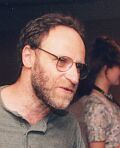 Art explosions - by definition - are unpredictable. In retrospect art historians
rationalize and untangle the magic, and reveal a cluster of political, cultural and aesthetic undercurrents, which made the explosion inevitable. How could silly and naive contemporaries not see it coming? You never have the advantage of hindsight once you're there in the midst of it. I'm positive, however, that if you're lucky enough to indeed find yourself in the midst of one - you won't possibly miss it or mistake it for a smooth and peaceful routine of an artistic "evolution". On the contrary the thrill of the moment can make you indeed overestimate what you see around. Now, years later, in writing these notes I'm faced with a double challenge: to try to reconstruct the heated excitement of an artistic revolution - as I saw it and was a part of it - and at the same time to attempt
analyzing it with an "objective" view of a critic. Art explosions - by definition - are unpredictable. In retrospect art historians
rationalize and untangle the magic, and reveal a cluster of political, cultural and aesthetic undercurrents, which made the explosion inevitable. How could silly and naive contemporaries not see it coming? You never have the advantage of hindsight once you're there in the midst of it. I'm positive, however, that if you're lucky enough to indeed find yourself in the midst of one - you won't possibly miss it or mistake it for a smooth and peaceful routine of an artistic "evolution". On the contrary the thrill of the moment can make you indeed overestimate what you see around. Now, years later, in writing these notes I'm faced with a double challenge: to try to reconstruct the heated excitement of an artistic revolution - as I saw it and was a part of it - and at the same time to attempt
analyzing it with an "objective" view of a critic.
My personal involvement in the new music scene began in the late 1970s when I came to live in Leningrad. By that time I'd become convinced that rock, my first musical passion, had passed its artistic pinnacle in the sounds of the "progressive", and was demising into senility of dinosaur supergroups which I didn't even bother to follow (punk didn't really happen then - at least not for us). Jazz had become a new passion. What fascinated me, however, was not the smooth, soothing sound of Ella and Louis that was about the only jazz exposure you could get in the prudent "official" Soviet environment. Even before coming to Leningrad, through Western radio and occasional tapes dubbed from mysterious never-to-be-seen records, I fell in love with spiky first albums of Mahavishnu Orchestra, atmospheric Weather Report, impressionist early ECM and even outlandishly abstract Anthony Braxton and the Art Ensemble of Chicago. This music seemed much more daring and inventive than anything rock could offer, and I was more than eager to get to know it deeper and wider. The interest and excitement were even more heated by the first signs of this obscure and fascinating music existing not only in the vast realms behind the impenetrable Iron Curtain but within our own confines as well. I will never forget the exhilarating shock I experienced in 1977 from a letter, which reached me in my army garrison on the island of Novaya Zemlya, beyond the Polar Circle. A like-minded friend proudly informed me that Melodia - the official and only record label in the USSR, the bastion of conformity, - published a record compared to which King Crimson (then the epitome of the avant-garde for us) sounded like nursery rhyme. The record he had in mind was Con Anima - the Ganelin trio's first official release. Outside major capitals where I lived then, the record, although officially published, proved not any easier to find than its Western counterparts. With a great effort, upon my return from a year of military service, I could find only a copy in a "blind" cover - no cover art, no names of the musicians, no instrumentation listed. If the pittance diet of Western music news somehow filtered to us through radio and music magazines from Poland, Czechoslovakia and East Germany that we were allowed to subscribe to, events in our own capitals seemed totally beyond reach. Ironically, it was exactly through the Czechoslovakian pop and jazz magazine Melodie that I first learned about the existence of Kvadrat Jazz Club (kvadrat means chorus), in Leningrad and a certain saxophonist Anatoly Vapirov who, according to Melodie, played ambitious new music.
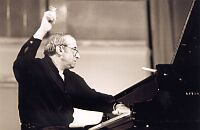 It was into this new and exciting world that I was ready to plunge head over heels when I came to live in Leningrad in August 1978. The Kvadrat club, that I found very soon, turned out to be a circle of enthusiasts, who, although selflessly dedicated to jazz, were promoting a music that sounded and tasted like a piece of dry and stale bread. Its Sunday noon concerts of home-grown second rate Dixieland and arid bop were as far removed from excitement and inventiveness of new music as a church mass was from the primeval ritual of neophytes. I duly served what I thought was my duty in attending Kvadrat's weekly gatherings an hour away from my home, sticking publicity posters on the walls and fences, and shifting amps to the stage. Fortunately the first music reward came rather soon. In just a couple of months the very first Autumn Rhythms Festival in November 78, alongside lacklustre mainstream, laid bare a kaleidoscope of sounds I craved for: twisted structures of Ganelin, Tarasov and Chekasin's "polystylism" (Ganelin's own term), ritualistic shamanistic magic of Arkhangelsk, vigorous power and brilliance of Vapirov's free jazz. It was in the Vapirov quartet that I first heard and saw a young and totally unknown pianist Sergey Kuryokhin with his sparkling, storming, shockingly aggressive assaults on the keyboard. It was into this new and exciting world that I was ready to plunge head over heels when I came to live in Leningrad in August 1978. The Kvadrat club, that I found very soon, turned out to be a circle of enthusiasts, who, although selflessly dedicated to jazz, were promoting a music that sounded and tasted like a piece of dry and stale bread. Its Sunday noon concerts of home-grown second rate Dixieland and arid bop were as far removed from excitement and inventiveness of new music as a church mass was from the primeval ritual of neophytes. I duly served what I thought was my duty in attending Kvadrat's weekly gatherings an hour away from my home, sticking publicity posters on the walls and fences, and shifting amps to the stage. Fortunately the first music reward came rather soon. In just a couple of months the very first Autumn Rhythms Festival in November 78, alongside lacklustre mainstream, laid bare a kaleidoscope of sounds I craved for: twisted structures of Ganelin, Tarasov and Chekasin's "polystylism" (Ganelin's own term), ritualistic shamanistic magic of Arkhangelsk, vigorous power and brilliance of Vapirov's free jazz. It was in the Vapirov quartet that I first heard and saw a young and totally unknown pianist Sergey Kuryokhin with his sparkling, storming, shockingly aggressive assaults on the keyboard.
I was enthralled. That was finally a window into a new world. Within weeks we were friends with Kuryokhin - we were of the same age, shared a common musical evolution, and dedication to new music which bordered on obsession. We met nearly every day swapping records, exchanging new information and building our own home-grown theories of music development. In a country where nearly everything else was limited, time was in ample supply - I remember I used to call it an era of "forced luxury". Banned from politics, business or travel, we plunged into records, films and books. Through Kuryokhin I met a circle of his friends - musicians, artists, writers - the core of Leningrad underground. One of them was Efim Barban - about twenty years older, he caught up with the jazz avantgarde at its birth in the early 60s, had an enormous record collection and regularly lectured on new jazz at the Kvadrat club. He was also a prolific jazz writer, editor and publisher of Kvadrat, a samizdat jazz journal. Originally a news bulletine of the eponymous club, Kvadrat by then had long ceased to represent the conservative club, and turned into a mouthpiece of its radical editor and an instrument in consolidating the country's burgeoning new jazz community.
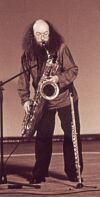 The turn of the 1980s was a radical epoch in the Soviet counterculture. Euphoric openness of the glasnost years was still way ahead, hardly looming beyond the horizon. Art and culture were divided as never before or after, and existed in two different, disparate, often antagonistic and hardly intercepting worlds. On the one hand you had a state sponsored and supported officialdom, on the other the underworld of non-conformist, alternative, subversive and the underground. The "second culture", as we proudly called ourselves in those days, functioned along its own rules and norms and managed even to create a infrastructure of its own, complete with festivals, concerts, theater performances, film screenings, literary, art, film and music journals, samizdat and magizdat. If samizdat stood mostly for banned books, painstakingly multiplied on carbon copies paper with the help of a regular typewriter, magizdat - from magnitofon, a tape recorder, meant tape copies of subversive protest songs and later rock. Jazz existed somewhere in between - a complete outcast barely two decades earlier, in the minds of many it still indiscriminately bore an image of a liberating spirit, with improvisation - a musical metaphor for freedom - at the heart of it. Late 1970s however brought a schism into the hitherto brotherly monolith of jazz community. A deeply divisive process, not dissimilar to what was happening in the American jazz of the early 1960s, separated "innovators" and "traditionalists". Worse yet, traditionalists, especially those based in Moscow, close to power and money, soon were lured into "officialdom" - with guaranteed concerts, records, TV and radio appearances and occasional foreign tours, which like everything else were "distributed" by the state. The turn of the 1980s was a radical epoch in the Soviet counterculture. Euphoric openness of the glasnost years was still way ahead, hardly looming beyond the horizon. Art and culture were divided as never before or after, and existed in two different, disparate, often antagonistic and hardly intercepting worlds. On the one hand you had a state sponsored and supported officialdom, on the other the underworld of non-conformist, alternative, subversive and the underground. The "second culture", as we proudly called ourselves in those days, functioned along its own rules and norms and managed even to create a infrastructure of its own, complete with festivals, concerts, theater performances, film screenings, literary, art, film and music journals, samizdat and magizdat. If samizdat stood mostly for banned books, painstakingly multiplied on carbon copies paper with the help of a regular typewriter, magizdat - from magnitofon, a tape recorder, meant tape copies of subversive protest songs and later rock. Jazz existed somewhere in between - a complete outcast barely two decades earlier, in the minds of many it still indiscriminately bore an image of a liberating spirit, with improvisation - a musical metaphor for freedom - at the heart of it. Late 1970s however brought a schism into the hitherto brotherly monolith of jazz community. A deeply divisive process, not dissimilar to what was happening in the American jazz of the early 1960s, separated "innovators" and "traditionalists". Worse yet, traditionalists, especially those based in Moscow, close to power and money, soon were lured into "officialdom" - with guaranteed concerts, records, TV and radio appearances and occasional foreign tours, which like everything else were "distributed" by the state.
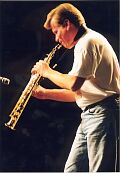 The under-the-surface jazz community which, in my pre-Leningrad provincial habitat, I only vaguely suspected of, although small, was definitely there. Few and far between, new jazz neophytes flocked towards a few major cities. Leningrad with its strongest jazz tradition and organisation was an obvious jazz capital. Vilnius, with not a much of a jazz life of its own, nevertheless rated very high just as a home to the Ganelin trio - the country's premiere new jazz ensemble. Another obvious centre - Novosibirsk, in the middle of Siberia, might seem a weird geographic location for decadent Western music, but with Akademgorodok - its academic and intellectual suburb - a remote Siberian city boasted intellectual, political and cultural intensity as strong as anywhere in the country. It was in Novosibirsk in the spring of 1978 that the first New Jazz Symposium was
organized by Sergey Belichenko - a gynecologist doctor, self-taught drummer and new jazz enthusiast, even more crazed than we were. The under-the-surface jazz community which, in my pre-Leningrad provincial habitat, I only vaguely suspected of, although small, was definitely there. Few and far between, new jazz neophytes flocked towards a few major cities. Leningrad with its strongest jazz tradition and organisation was an obvious jazz capital. Vilnius, with not a much of a jazz life of its own, nevertheless rated very high just as a home to the Ganelin trio - the country's premiere new jazz ensemble. Another obvious centre - Novosibirsk, in the middle of Siberia, might seem a weird geographic location for decadent Western music, but with Akademgorodok - its academic and intellectual suburb - a remote Siberian city boasted intellectual, political and cultural intensity as strong as anywhere in the country. It was in Novosibirsk in the spring of 1978 that the first New Jazz Symposium was
organized by Sergey Belichenko - a gynecologist doctor, self-taught drummer and new jazz enthusiast, even more crazed than we were.
Barban, our guru lived a life of a reclusive inner emigre, content in an ivory tower of his small, crammed with books and records apartment in the outskirts of Leningrad, and in fact only waiting for a chance to get out of the country. On his own he was not really ready to prepared to set up a viable aesthetic opposition. However, as soon as he saw two young men, full of energy and enthusiasm, he came up with an idea of an alternative, New Jazz club. The new formation was to set itself apart both from officialdom and from the staunch conservatism of Kvadrat, and start proselytising the holy word and sound of Ornette, Trane, Cecil and Sun Ra along with those of Stockhausen, Cage, Boulez and Xenakis. Needless to say, we were more than excited and after some skilful bureaucratic manoeuvring Contemporary Music Club was set up in the Lensovieta Palace of Culture.
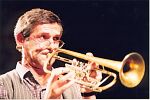 A venue under our own artistic control turned out to be a huge motivation and a challenge. Musicians started to flock around. It was a laboratory, where trumpeter Slava Gayvoronsky first tried a duo format with then only 18-year-old bass prodigy Vladimir Volkov. Vapirov experimented with his different bands and premiered his major works. Kuryokhin refined his solo playing and fooled around with improvised ensembles, which later grew up into his formidable Popular Mechanics shows. Initially the CMC was a playground for just local, Leningrad musicians, but the word quickly spread around. Sergey Letov and Valentina Ponomareva from Moscow, Vlad Makarov from Smolensk, Chekasin and his students/associates Petras Vysnauskas, Vytautas Labutis, Oleg Molokoedov from Vilnius came over to play. In April of 1980 we had our first Spring New Jazz Concerts - an alternative to the "official" Autumn Rhythms Festival. Unhindered experimentation breaking loose of all the barriers was the slogan of the day. Chekasin who felt somewhat confined in Ganelin's structures, came specially to stage up his wild theatrical shows, which strongly influenced Kuryokhin in shaping the concept of the future Popular Mechanics. The place was becoming hip and a magnet not just for musicians and new music enthusiasts but to everybody craving for new art, new ideas, new spirit and long suppressed freedom. All the existing barriers between art forms were blurred and falling apart. Poets and writers were up on stage with musicians, "unofficial" non-conformists artists were exhibiting their works in the foyer and at the stage backdrop. At about the same time rock was surfacing from the complete underground, and CMC became a venue for crossover experimentation between free jazz and rock musicians. Valentina Ponomareva was singing with Kuryokhin and Chekasin as well as with Aquarium rock band. Aquarium musicians were regular members of Popular Mechanics. The place was a mainstay even for the academic avantgarde: Edison Denisov, who along with fellow avantgarde composers Schnittke and Gubaidullina was
marginalized by the conservative Composers Union, had a first ever complete concert of his works at the CMC. Foreign contacts - something unthinkable just a few years earlier - suddenly exploded. I regularly reported the CMC activities in Jazz Forum, Coda, Cadence and in response received dozens of letters from people all over the world amazed to find out that obscure new jazz was alive and kicking behind the Iron Curtain. Hans Kumpf, John Fischer, Jan Garbarek, Elton Dean, ROVA Saxophone Quartet, Oliver Lake were regular, if at times semi-incognito performing guests. At about the same time Leo Feigin in London started his Leo Records and soon we were flooded with reviews from the entire range of the Western press - from the same specialised Coda and Cadence to every major newspaper in Britain and the US. A venue under our own artistic control turned out to be a huge motivation and a challenge. Musicians started to flock around. It was a laboratory, where trumpeter Slava Gayvoronsky first tried a duo format with then only 18-year-old bass prodigy Vladimir Volkov. Vapirov experimented with his different bands and premiered his major works. Kuryokhin refined his solo playing and fooled around with improvised ensembles, which later grew up into his formidable Popular Mechanics shows. Initially the CMC was a playground for just local, Leningrad musicians, but the word quickly spread around. Sergey Letov and Valentina Ponomareva from Moscow, Vlad Makarov from Smolensk, Chekasin and his students/associates Petras Vysnauskas, Vytautas Labutis, Oleg Molokoedov from Vilnius came over to play. In April of 1980 we had our first Spring New Jazz Concerts - an alternative to the "official" Autumn Rhythms Festival. Unhindered experimentation breaking loose of all the barriers was the slogan of the day. Chekasin who felt somewhat confined in Ganelin's structures, came specially to stage up his wild theatrical shows, which strongly influenced Kuryokhin in shaping the concept of the future Popular Mechanics. The place was becoming hip and a magnet not just for musicians and new music enthusiasts but to everybody craving for new art, new ideas, new spirit and long suppressed freedom. All the existing barriers between art forms were blurred and falling apart. Poets and writers were up on stage with musicians, "unofficial" non-conformists artists were exhibiting their works in the foyer and at the stage backdrop. At about the same time rock was surfacing from the complete underground, and CMC became a venue for crossover experimentation between free jazz and rock musicians. Valentina Ponomareva was singing with Kuryokhin and Chekasin as well as with Aquarium rock band. Aquarium musicians were regular members of Popular Mechanics. The place was a mainstay even for the academic avantgarde: Edison Denisov, who along with fellow avantgarde composers Schnittke and Gubaidullina was
marginalized by the conservative Composers Union, had a first ever complete concert of his works at the CMC. Foreign contacts - something unthinkable just a few years earlier - suddenly exploded. I regularly reported the CMC activities in Jazz Forum, Coda, Cadence and in response received dozens of letters from people all over the world amazed to find out that obscure new jazz was alive and kicking behind the Iron Curtain. Hans Kumpf, John Fischer, Jan Garbarek, Elton Dean, ROVA Saxophone Quartet, Oliver Lake were regular, if at times semi-incognito performing guests. At about the same time Leo Feigin in London started his Leo Records and soon we were flooded with reviews from the entire range of the Western press - from the same specialised Coda and Cadence to every major newspaper in Britain and the US.
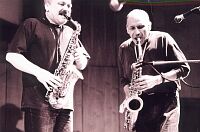 It would definitely be wrong to say that Leningrad was the only place for the new music. The system of jazz festivals was spread throughout the entire huge country, and nearly every more or less visible musician could perform a few times a year in places as diverse and distant as Krasnoyarsk in Eastern Siberia, Riga on the Baltic Sea, Apatity behind the Polar Circle near Murmansk, and Odessa on the Black Sea. Some of these - especially those where local musicians and/or organisers were new music enthusiasts, tended to feature free improvised music more than others. One festival was absolutely exceptional. Old Russian city Arkhangelsk, far way in the North, gave home and name for one of the most influential bands in Russian jazz. Saxophonist Vladimir Resitsky played jazz with drummer Vladimir Tarasav, who comes from Arkhangelsk since the mid-60s. When Tarasov moved to Vilnius and started playing with Ganelin, they invited Resitsky to join them in a trio. A dedicated patriot of the North and his city, Resitsky declined the invitation and soon Chekasin stepped into the trio. Resitsky stayed back and painstakingly formed his band. The band was a real commune with complete dedication to music. Soon a festival was born, and Arkhangelsk Jazz Fest was the one where the word "festival" really meant what it should mean: a feast, a celebration, an elevation of spirit: with music, vodka and unavoidable Russian steambath. Every festival climaxed with a three-day boat trip to Archipelago of Solovki, a place of breathtaking Northern beauty. Leo Feigin was quite right when he said that Resitsky - a tireless and totally selfless driving force behind all this - managed to turn his place near the Arctic into a genuine Russian New Orleans. Sadly, while these notes were being written, we heard tragic news of Volodya Restitsky's death. He will be strongly missed but always remembered. It would definitely be wrong to say that Leningrad was the only place for the new music. The system of jazz festivals was spread throughout the entire huge country, and nearly every more or less visible musician could perform a few times a year in places as diverse and distant as Krasnoyarsk in Eastern Siberia, Riga on the Baltic Sea, Apatity behind the Polar Circle near Murmansk, and Odessa on the Black Sea. Some of these - especially those where local musicians and/or organisers were new music enthusiasts, tended to feature free improvised music more than others. One festival was absolutely exceptional. Old Russian city Arkhangelsk, far way in the North, gave home and name for one of the most influential bands in Russian jazz. Saxophonist Vladimir Resitsky played jazz with drummer Vladimir Tarasav, who comes from Arkhangelsk since the mid-60s. When Tarasov moved to Vilnius and started playing with Ganelin, they invited Resitsky to join them in a trio. A dedicated patriot of the North and his city, Resitsky declined the invitation and soon Chekasin stepped into the trio. Resitsky stayed back and painstakingly formed his band. The band was a real commune with complete dedication to music. Soon a festival was born, and Arkhangelsk Jazz Fest was the one where the word "festival" really meant what it should mean: a feast, a celebration, an elevation of spirit: with music, vodka and unavoidable Russian steambath. Every festival climaxed with a three-day boat trip to Archipelago of Solovki, a place of breathtaking Northern beauty. Leo Feigin was quite right when he said that Resitsky - a tireless and totally selfless driving force behind all this - managed to turn his place near the Arctic into a genuine Russian New Orleans. Sadly, while these notes were being written, we heard tragic news of Volodya Restitsky's death. He will be strongly missed but always remembered.
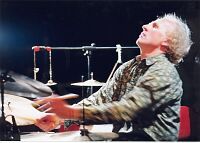 Meanwhile in music, in spite of all the claims of being the "avant-garde", prevailing tendencies were becoming more and more definitely post-modern, although the term itself was totally unfamiliar until the late 1980s. Jazz-based free improvisation gave way to more elaborate compositional structures with lots of inclusions from popular music and culture. One could easily distinguish three main trends. Purist free improvisers: cellist Vlad Makarov from Smolensk, Homo Liber from Novosibirsk, Sergey Letov till the very late 80s when he joined the postmodernists, were in the minority and looked more and more marginalised and outdated. "Serious" composers: Vapirov persistently stuck to large scale, full of pathos and somewhat pompous third stream compositions along the lines of Mahler, Berg and Mingus (Macbeth, Lines of Destiny, De Profundis) with string quartets, chamber orchestras and choirs. His once devoted pianist Kuryokhin was getting more and more bored by this "seriousness" and confessed to me that in a most serious moment of Vapirov's performance he could hardly resist the temptation to put on a red nose. Gayvoronsky, a daring and innovative composer, drew inspiration from more traditional sources from J.S. Bach to John Coltrane, from Indian Ragas to Yankee Doodle. Ganelin, disaffected by Chekasin's outbursts, more and more gravitated towards "seriousness", which was especially strongly evident in his work outside the trio. However, most striking, noisy, flamboyant were post-modern showmen: primarily Chekasin and Kuryokhin. The seed for the "theatrical jazz" was sown as early as 1976 in the Ganelin trio programme Home Music Making, where musicians appeared on stage dressed in pyjamas and cosily stationed in their beds. The origin of this approach for the Vilnius trio can be traced to their (primarily percussionist Vladimir Tarasov's) close ties to the circle of Moscow conceptual artists, who, in their turn, were inspired equally by Andy Warhol's pop art and avant-garde performance art/happenings of Fluxus type. Ganelin, however, strongly disapproved of these shows and never let it happen again in the trio's concerts. Even years later he was visibly irritated by Chekasin's excessive gesturing, provocative poses and deliberate showmanship, which the pianist contemptuously branded as "clownish". Chekasin, who regarded Ganelin's disapproval as nothing other than jealousy, out of defiance and stubbornness, was more and more indulging himself with the shows - initially sharp, visual, interactive with the audiences. The further he went, however, the more tasteless his escapades became, until they reached a point of sheer embarrassment. Kuryokhin, on the other had, with his inborn charm, charisma, and irresistible sex appeal, proved much more successful. The musical quality of the Popular Mechanics shows was never consistent: Kuryokhin never bored himself or his musicians with long rehearsals. But the sheer wealth of images, total unpredictability, huge variety and paradoxical "inappropriateness" of the means employed, infinite wit and sarcasm of musical, cultural, social and political commentary subtly woven into the fabric of a hugely entertaining non-stop performance invariably left the audiences - wherever he performed - nothing other but mesmerised. Vigour, inventiveness, brightness and most of all success of the main protagonists made "theatrical jazz" virus really contagious, and for a number of years in the late 80s and early 90s elaborately staged shows seemed to fully dominate the Soviet/Russian scene. Kuryokhin, with characteristic extremism, brought the idea ad absurdum.when at a supposed piano recital he came up on stage, told improvised tales and fables for about half an hour, then ceremoniously bowed and left the stage without ever touching the piano. Literary element, traditionally strong in Russian culture, was extremely strong in new jazz as well. This again reflected similar tendencies in the early New York avant-garde of the 1960s, when poetry of Amiri Baraka was as potent a music tool as the saxophone of Archie Shepp. Tarasov had a number of performances with conceptual writers and artists Ilya Kabakov, Dmitry Prigov and Lev Rubinstein. Orkestrion, a trio from Volgograd, was even formed by poet Sergey Karsavin. Their outrageous amalgamation of word and sound reflected images of this unique city where portentous symbolism of Soviet propaganda over the victory in Stalingrad, coexisted with misery and reckless despair of crime- and poverty ridden working class slums. Soon Arkhangelsk followed suit, hitting the stage with buckets on their heads, and TriO - a brass trio of Sergey Letov on reeds,
Arkady Shilkloper on French horn, and Arkady Kirichenko on tuba and vocals - based their nearly entire output on a similar grotesque post-modern approach. This coincided with the similar tendencies in Russian rock and with the years of sudden Soviet-West love affair. Gorbachev, glasnost and perestroika were the trendiest notions of the day, Russians were welcome everywhere, and Kuryokhin, Chekasin, TrioO and Orkestrion, as well as AVIA, Zvuki Mu and Auktsion roamed from one European festival to another with their theatrical rock and jazz. Meanwhile in music, in spite of all the claims of being the "avant-garde", prevailing tendencies were becoming more and more definitely post-modern, although the term itself was totally unfamiliar until the late 1980s. Jazz-based free improvisation gave way to more elaborate compositional structures with lots of inclusions from popular music and culture. One could easily distinguish three main trends. Purist free improvisers: cellist Vlad Makarov from Smolensk, Homo Liber from Novosibirsk, Sergey Letov till the very late 80s when he joined the postmodernists, were in the minority and looked more and more marginalised and outdated. "Serious" composers: Vapirov persistently stuck to large scale, full of pathos and somewhat pompous third stream compositions along the lines of Mahler, Berg and Mingus (Macbeth, Lines of Destiny, De Profundis) with string quartets, chamber orchestras and choirs. His once devoted pianist Kuryokhin was getting more and more bored by this "seriousness" and confessed to me that in a most serious moment of Vapirov's performance he could hardly resist the temptation to put on a red nose. Gayvoronsky, a daring and innovative composer, drew inspiration from more traditional sources from J.S. Bach to John Coltrane, from Indian Ragas to Yankee Doodle. Ganelin, disaffected by Chekasin's outbursts, more and more gravitated towards "seriousness", which was especially strongly evident in his work outside the trio. However, most striking, noisy, flamboyant were post-modern showmen: primarily Chekasin and Kuryokhin. The seed for the "theatrical jazz" was sown as early as 1976 in the Ganelin trio programme Home Music Making, where musicians appeared on stage dressed in pyjamas and cosily stationed in their beds. The origin of this approach for the Vilnius trio can be traced to their (primarily percussionist Vladimir Tarasov's) close ties to the circle of Moscow conceptual artists, who, in their turn, were inspired equally by Andy Warhol's pop art and avant-garde performance art/happenings of Fluxus type. Ganelin, however, strongly disapproved of these shows and never let it happen again in the trio's concerts. Even years later he was visibly irritated by Chekasin's excessive gesturing, provocative poses and deliberate showmanship, which the pianist contemptuously branded as "clownish". Chekasin, who regarded Ganelin's disapproval as nothing other than jealousy, out of defiance and stubbornness, was more and more indulging himself with the shows - initially sharp, visual, interactive with the audiences. The further he went, however, the more tasteless his escapades became, until they reached a point of sheer embarrassment. Kuryokhin, on the other had, with his inborn charm, charisma, and irresistible sex appeal, proved much more successful. The musical quality of the Popular Mechanics shows was never consistent: Kuryokhin never bored himself or his musicians with long rehearsals. But the sheer wealth of images, total unpredictability, huge variety and paradoxical "inappropriateness" of the means employed, infinite wit and sarcasm of musical, cultural, social and political commentary subtly woven into the fabric of a hugely entertaining non-stop performance invariably left the audiences - wherever he performed - nothing other but mesmerised. Vigour, inventiveness, brightness and most of all success of the main protagonists made "theatrical jazz" virus really contagious, and for a number of years in the late 80s and early 90s elaborately staged shows seemed to fully dominate the Soviet/Russian scene. Kuryokhin, with characteristic extremism, brought the idea ad absurdum.when at a supposed piano recital he came up on stage, told improvised tales and fables for about half an hour, then ceremoniously bowed and left the stage without ever touching the piano. Literary element, traditionally strong in Russian culture, was extremely strong in new jazz as well. This again reflected similar tendencies in the early New York avant-garde of the 1960s, when poetry of Amiri Baraka was as potent a music tool as the saxophone of Archie Shepp. Tarasov had a number of performances with conceptual writers and artists Ilya Kabakov, Dmitry Prigov and Lev Rubinstein. Orkestrion, a trio from Volgograd, was even formed by poet Sergey Karsavin. Their outrageous amalgamation of word and sound reflected images of this unique city where portentous symbolism of Soviet propaganda over the victory in Stalingrad, coexisted with misery and reckless despair of crime- and poverty ridden working class slums. Soon Arkhangelsk followed suit, hitting the stage with buckets on their heads, and TriO - a brass trio of Sergey Letov on reeds,
Arkady Shilkloper on French horn, and Arkady Kirichenko on tuba and vocals - based their nearly entire output on a similar grotesque post-modern approach. This coincided with the similar tendencies in Russian rock and with the years of sudden Soviet-West love affair. Gorbachev, glasnost and perestroika were the trendiest notions of the day, Russians were welcome everywhere, and Kuryokhin, Chekasin, TrioO and Orkestrion, as well as AVIA, Zvuki Mu and Auktsion roamed from one European festival to another with their theatrical rock and jazz.
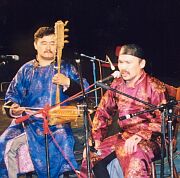 However, outside the buzz of this "showbiz", another strong but not at all radical trend was ripening. For lack of better term I will call it chamber-ethnic jazz, for it focused on the small-group chamber-jazz approach with strong ethnic influences. Folk or ethnic incursions into any music - be it jazz, rock or classical - had always been strongly encouraged by the Soviet musical establishment, which - as every authoritarian regime - saw folk art as antithesis to decadent Western influences. Notwithstanding the pressure of officialdom, genuine interest in authentic ethnic music and experimentation in blending it with jazz never stopped. Most interesting examples were joint performances of Arkhangelsk and Dmitry Pokrovsky Ensemble and especially very strong and underestimated recording of Roman Dubinnikov's Dearly Departed. More noticeable were the attempts of musicians from national republics of the former USSR - especially successful was Azerbajani pianist Vagif Mustafa Zadeh with his incorporation of mugams into jazz improvisation. Vagif died an early death in 1978 long before his music could be fully appreciated. His daughter, however, pianist and vocalist Aziza Mustafa Zadeh, after an international debut at the Zurich Soviet Avant-Jazz Festival in 1989 launched an extremely successful career in the US, although her music fits more into an idiom of pop-jazz-fusion. Another exotic woman - Sainkho Namtchylak - was much more radical in her approach. Her radicalism - she did free improvisation, and played a lot with best known practitioners of the genre: Peter Kowald, Ned Rothenberg, Evan Parker - was strongly compensated by her origin in Tuva. A tiny Buddhist nation in Eastern Siberia, with its unique culture of throat singing over the last decade proved to be a bigger international success story, than anything else from the former USSR. Along with Sainkho, at least two more bands from Tuva: Huun Huur Tu and Yat-Kha regularly tour Western Europe and the US. Another success story of the 1990s is pianist Misha Alperin. A Jew who grew up on the border between Moldova and the Ukraine, about the only part of Europe with a tradition of folk music still very much alive, he soaked a colourful and rich palette of Jewish, Romanian, Ukranian, Hungarian and Gypsy folk tunes. His first ECM records, with French horn player Arcady Shilkloper were, however, sterile, impressionistic and somewhat lifeless. It was only when the two were joined by singer and reed player Sergey Starostin, in Moscow Art Trio, the music started to acquire new dimensions. Starostin, a scholar and researcher of authentic Russian music, with experience in improvised music and rock, has turned into a pivotal figure on the contemporary Russian new music scene. Alperin moved to Norway, and has added Scandinavian touch to the palette of his ethnic influences. Moscow Art Trio had a few ambitious grand scale projects with Huun-Huur-Tu and Bulgarian female choir Angelita. Slava Gayvoronsky in a new duo with accordion player Evelyn Petrova continues the search for a new synthesis between his compositional ideas and Russian authenticity that he started in the Russian Songs cycle with Volkov. Volkov after breaking free from his partner of nearly twenty years, started his own Volkov Trio and plays in international Russian-Dutch-Senegalese-Tuvanese ethno-jazz outfit Vershki Da Koreshki. However, outside the buzz of this "showbiz", another strong but not at all radical trend was ripening. For lack of better term I will call it chamber-ethnic jazz, for it focused on the small-group chamber-jazz approach with strong ethnic influences. Folk or ethnic incursions into any music - be it jazz, rock or classical - had always been strongly encouraged by the Soviet musical establishment, which - as every authoritarian regime - saw folk art as antithesis to decadent Western influences. Notwithstanding the pressure of officialdom, genuine interest in authentic ethnic music and experimentation in blending it with jazz never stopped. Most interesting examples were joint performances of Arkhangelsk and Dmitry Pokrovsky Ensemble and especially very strong and underestimated recording of Roman Dubinnikov's Dearly Departed. More noticeable were the attempts of musicians from national republics of the former USSR - especially successful was Azerbajani pianist Vagif Mustafa Zadeh with his incorporation of mugams into jazz improvisation. Vagif died an early death in 1978 long before his music could be fully appreciated. His daughter, however, pianist and vocalist Aziza Mustafa Zadeh, after an international debut at the Zurich Soviet Avant-Jazz Festival in 1989 launched an extremely successful career in the US, although her music fits more into an idiom of pop-jazz-fusion. Another exotic woman - Sainkho Namtchylak - was much more radical in her approach. Her radicalism - she did free improvisation, and played a lot with best known practitioners of the genre: Peter Kowald, Ned Rothenberg, Evan Parker - was strongly compensated by her origin in Tuva. A tiny Buddhist nation in Eastern Siberia, with its unique culture of throat singing over the last decade proved to be a bigger international success story, than anything else from the former USSR. Along with Sainkho, at least two more bands from Tuva: Huun Huur Tu and Yat-Kha regularly tour Western Europe and the US. Another success story of the 1990s is pianist Misha Alperin. A Jew who grew up on the border between Moldova and the Ukraine, about the only part of Europe with a tradition of folk music still very much alive, he soaked a colourful and rich palette of Jewish, Romanian, Ukranian, Hungarian and Gypsy folk tunes. His first ECM records, with French horn player Arcady Shilkloper were, however, sterile, impressionistic and somewhat lifeless. It was only when the two were joined by singer and reed player Sergey Starostin, in Moscow Art Trio, the music started to acquire new dimensions. Starostin, a scholar and researcher of authentic Russian music, with experience in improvised music and rock, has turned into a pivotal figure on the contemporary Russian new music scene. Alperin moved to Norway, and has added Scandinavian touch to the palette of his ethnic influences. Moscow Art Trio had a few ambitious grand scale projects with Huun-Huur-Tu and Bulgarian female choir Angelita. Slava Gayvoronsky in a new duo with accordion player Evelyn Petrova continues the search for a new synthesis between his compositional ideas and Russian authenticity that he started in the Russian Songs cycle with Volkov. Volkov after breaking free from his partner of nearly twenty years, started his own Volkov Trio and plays in international Russian-Dutch-Senegalese-Tuvanese ethno-jazz outfit Vershki Da Koreshki.
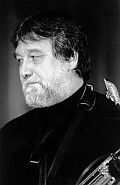 The scene has changed radically. If twenty years ago we strained to have musicians play at bi-weekly concerts at the CMC, now Nick Dmitriev's Dom Centre in Moscow features new music five nights a week. SKIF - Sergey Kuryokhin International Festival - in St.Petersburg is a mammoth event with hundreds of artists, including major international names: Terry Riley, Keith and Julie Tippets, Faust, Frank London, Peter Brotzman, and many others. The festival started in New York and then moved to St.Petersburg. Russian musicians travel and live where they want to, and where there's work for them. The scene has changed radically. If twenty years ago we strained to have musicians play at bi-weekly concerts at the CMC, now Nick Dmitriev's Dom Centre in Moscow features new music five nights a week. SKIF - Sergey Kuryokhin International Festival - in St.Petersburg is a mammoth event with hundreds of artists, including major international names: Terry Riley, Keith and Julie Tippets, Faust, Frank London, Peter Brotzman, and many others. The festival started in New York and then moved to St.Petersburg. Russian musicians travel and live where they want to, and where there's work for them.
It's nearly five years now that Sergey Kuryokhin died at his prime, at the age of 42. The Ganelin trio broke up even earlier, when Ganelin emigrated to Israel in 1987.
It would be at least silly to say that we miss those years, the years of the Iron Curtain. But yes I do, I miss that feeling of an explosion, the feeling of a revolution, something we all felt in the 80s. Within our confines we felt an incredible brotherhood and had an illusion that the brotherhood would spread across the borders. Money did not exist, did not count and was not a factor. Music mattered. Golden years indeed...
Alexander Kan
London,
April 2001.
|